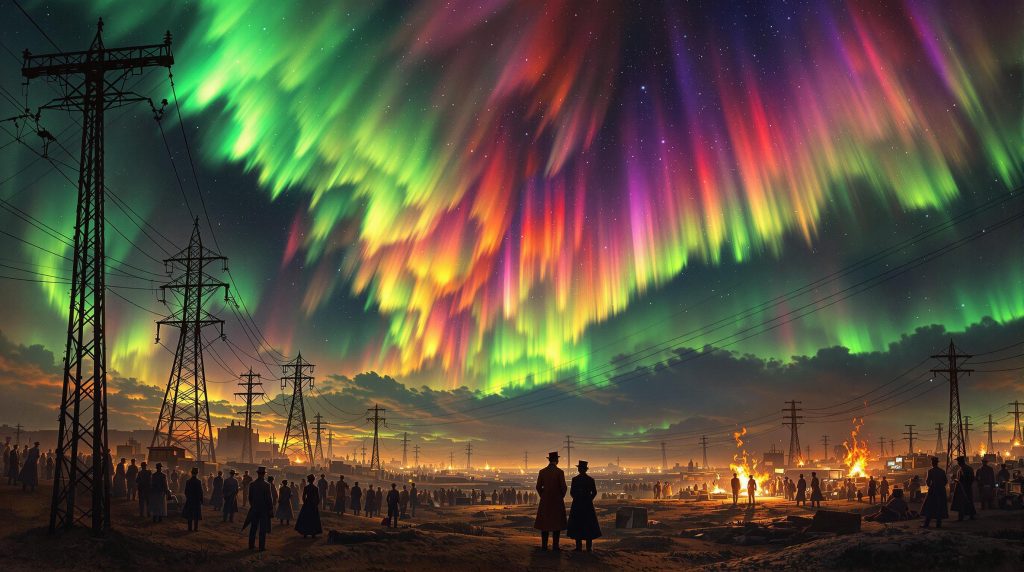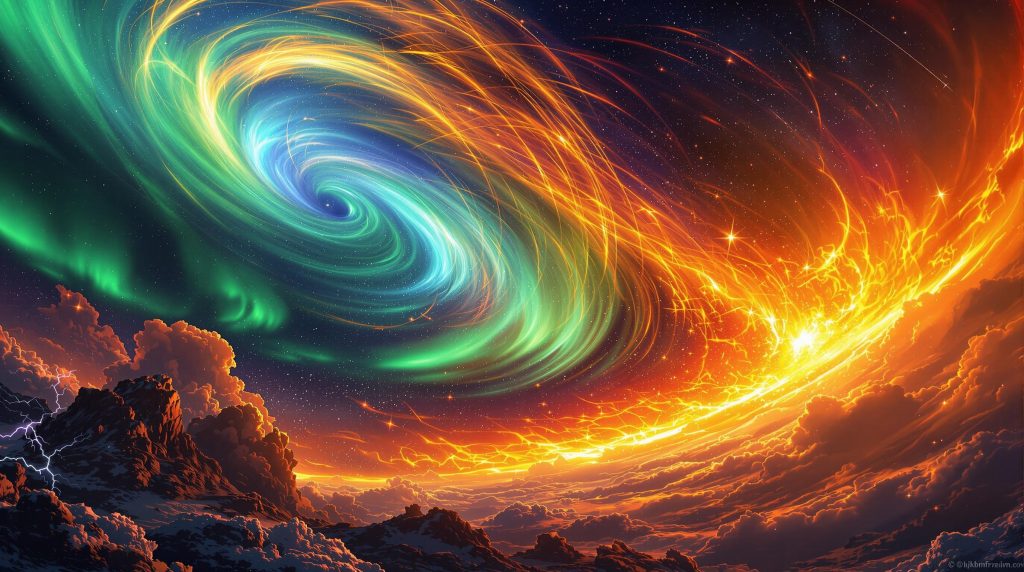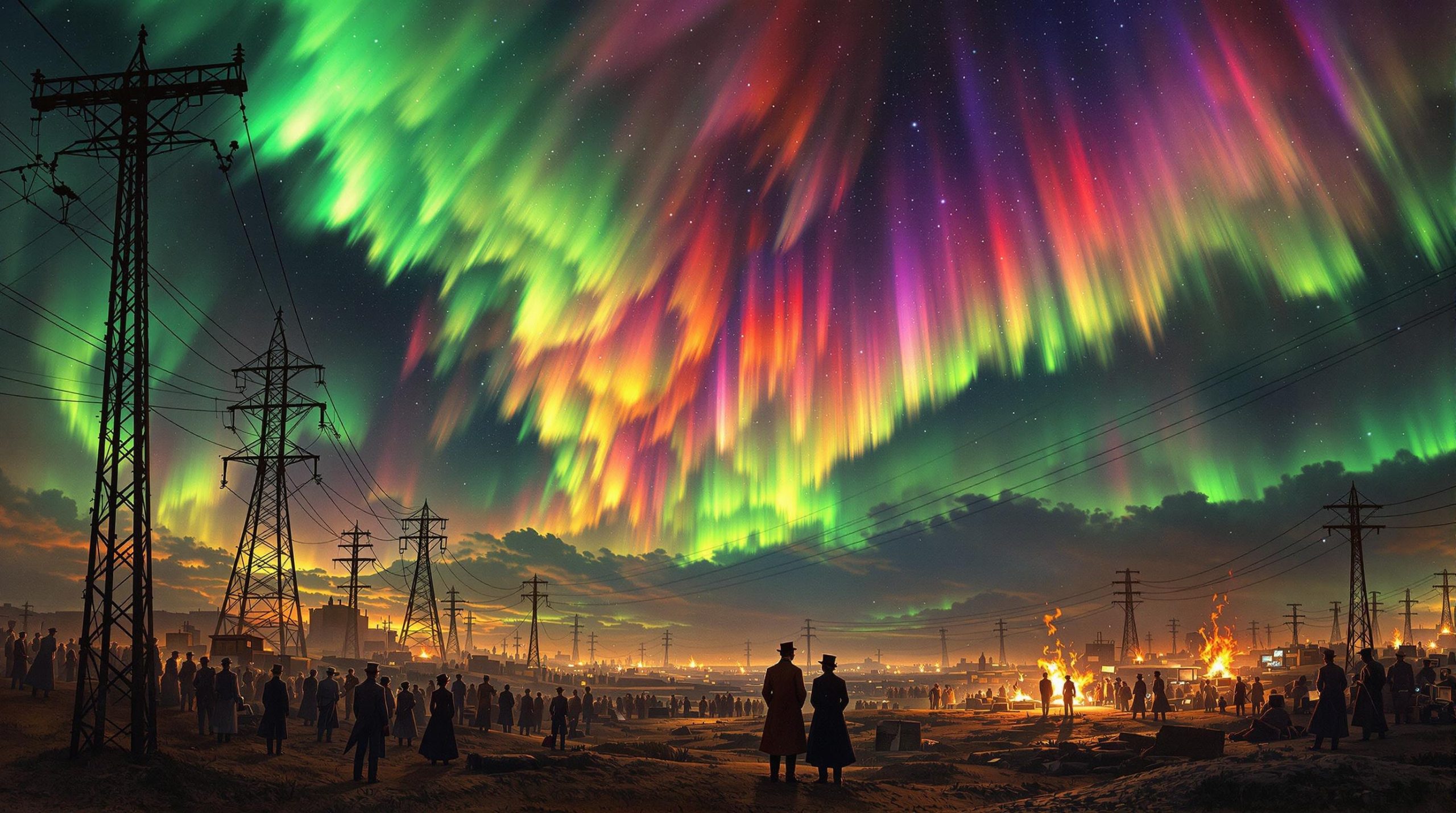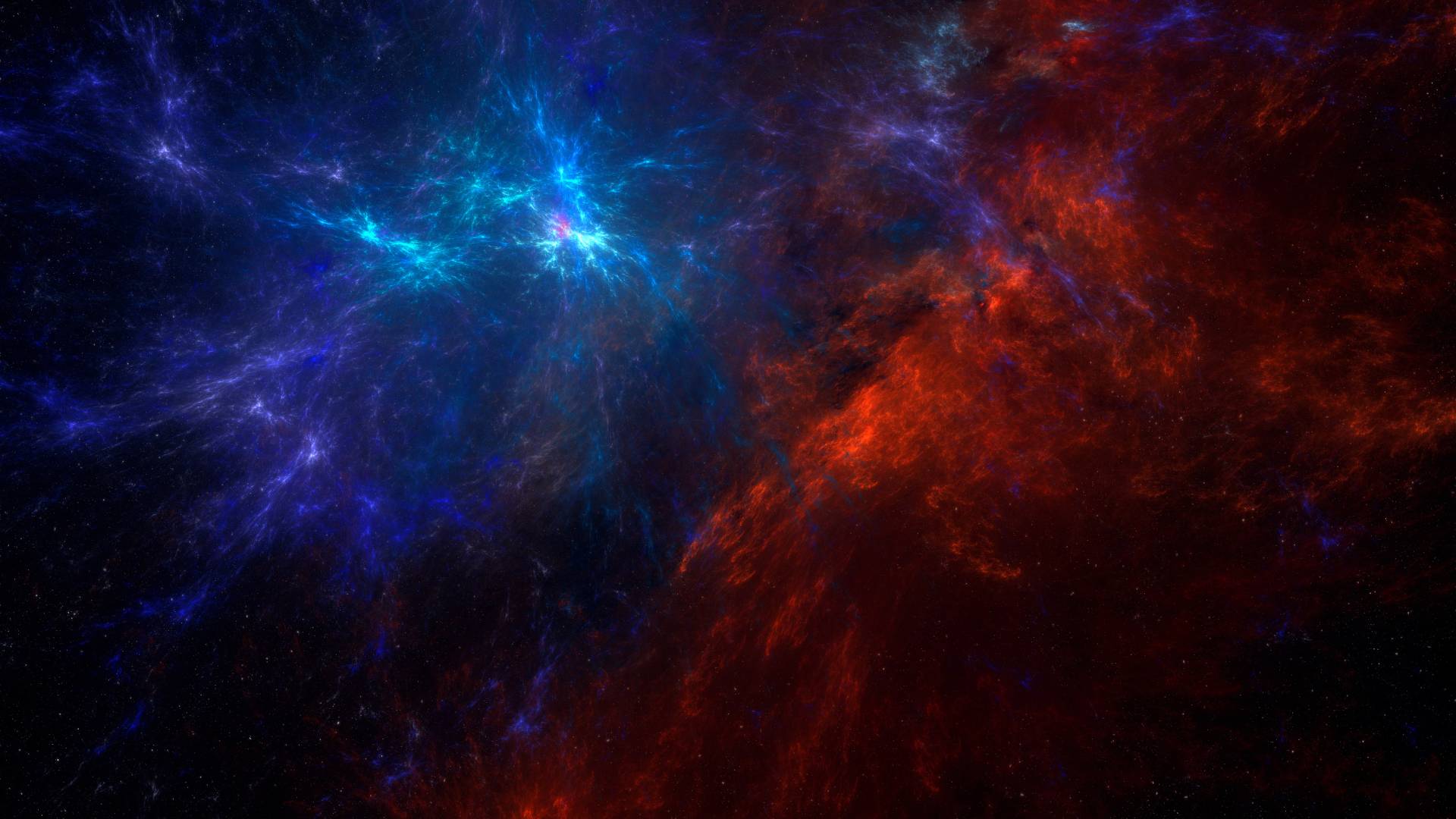imagine waking up one morning to find the entire planet plunged into Solar Storm of 1859 (Carrington Event). Power grids fail, satellites malfunction, GPS systems go haywire, and communications collapse. This isn’t the plot of a sci-fi movie; it’s a real scenario that could happen if a solar storm similar to the Carrington Event of 1859 were to strike Earth today. But what exactly was this historic solar storm, and more importantly, could it happen again? Stay with Spaceyv
What Was the Carrington Event ( Solar Storm of 1859 )?
On September 1–2, 1859, the most powerful geomagnetic storm ever recorded struck Earth. It was named the Carrington Event after British astronomer Richard Carrington, who observed an intense burst of white light from the Sun—the first recorded observation of a solar flare.
The event caused:
- Brilliant auroras seen as far south as the Caribbean
- Telegraph systems failing across Europe and North America
- Electrical fires due to overloaded telegraph wires
- Disruptions to early electrical technology
While this storm was merely an inconvenience in an era before widespread electricity, today it would be a global catastrophe with far-reaching consequences across all aspects of life.
What Causes Solar Storms?
Solar storms originate from the Sun’s activity, particularly from eruptions called coronal mass ejections (CMEs). These occur when massive amounts of charged particles and magnetic fields are ejected into space. If one of these CMEs collides with Earth’s magnetosphere, it triggers a geomagnetic storm, disturbing power systems, communication networks, and even the ozone layer.
Key components of a solar storm:
- Solar Flares: Explosions on the Sun’s surface that release intense energy, sometimes reaching Earth in just 8 minutes.
- Coronal Mass Ejections (CMEs): Large bursts of plasma that travel through space and can take one to three days to reach Earth.
- Geomagnetic Storms: When these charged particles interact with Earth’s magnetic field, they cause widespread disruptions, affecting everything from navigation systems to high-frequency radio signals.
Could a Carrington-Level Storm Happen Again?
Short answer: Yes. But the real question is when and how prepared we are. Scientists estimate that storms of similar magnitude occur roughly once every 100–200 years. This means we are already within the timeframe where another such storm could strike.

Recent Near-Misses
- July 2012: A massive CME narrowly missed Earth. If it had struck, it could have caused widespread technological failures, costing trillions of dollars in damages.
- October 2003: The “Halloween Storms” disrupted satellites, caused power failures in Sweden, and forced airlines to reroute flights.
- March 1989: A geomagnetic storm caused a 9-hour blackout across Quebec, Canada, affecting over 6 million people.
Scientists warn that modern civilization is alarmingly vulnerable to a solar storm on the scale of the Carrington Event.
What Would Happen If It Hit Today?
Unlike 1859, our modern world relies heavily on electricity, satellites, and digital communications. A Carrington-like event today could lead to severe consequences across multiple sectors.
1. Global Power Grid Failures
- High-voltage transformers could be permanently damaged, leading to prolonged blackouts.
- Restoring power could take weeks to months, or even years in some areas, leading to economic turmoil and widespread panic.
2. Satellite Malfunctions and Space Travel Risks
- GPS systems would stop working, affecting transportation, logistics, and emergency services.
- Communications satellites would be fried, disrupting television, internet, and global security networks.
- Astronauts on the ISS would be exposed to lethal radiation, requiring urgent sheltering strategies.

3. Internet and Telecommunications Collapse
- Fiber optic cables rely on signal amplifiers powered by electrical grids, meaning the entire global internet infrastructure could fail temporarily.
- Social media, online banking, and international financial transactions would cease to function.
4. Financial and Economic Meltdown
- Stock markets and banking systems rely on digital networks for real-time trading.
- Global trade and commerce would come to a standstill, causing massive inflation and financial instability.
- Without working payment systems, businesses and households would struggle to obtain essential goods and services.
5. Transportation Disruptions
- Airlines would be grounded due to loss of navigation and communication systems.
- Electric vehicles and modern cars with GPS and onboard computers would be rendered useless.
- Supply chain disruptions would lead to food and fuel shortages, causing mass hysteria and potential riots.
Are We Prepared?
Despite knowing the risks, most nations are not adequately prepared for a solar storm of Carrington magnitude. Some key challenges include:
- Lack of early warning systems: Current solar observatories provide only 12–24 hours of notice.
- Weak infrastructure: Most power grids and satellites were not designed to withstand extreme geomagnetic storms.
- Limited government policies: Few nations have detailed contingency plans for such an event.
- Public unawareness: Unlike hurricanes or earthquakes, geomagnetic storms are not widely understood by the general population, leaving people vulnerable to misinformation and panic.
What Can Be Done?
To minimize the impact of a future solar storm, we must:
- Upgrade power grids with surge protectors and backup systems.
- Develop better space weather forecasting to improve early warning times and create emergency response protocols.
- Harden satellites and spacecraft to resist solar radiation and develop protective shielding for astronauts.
- Create global emergency response plans to mitigate economic and social impacts, ensuring continuity of government and essential services.
- Raise public awareness about solar storms and their potential consequences, so individuals can take proactive steps to protect themselves.
Conclusion: A Race Against Time
The Carrington Event of 1859 serves as a stark reminder of the Sun’s power. While it was a fascinating phenomenon in the 19th century, a similar event today would be catastrophic. The real question isn’t if it will happen again, but when—and whether we will be ready when it does.
Are we prepared for a solar storm apocalypse, or are we simply waiting for disaster to strike? The fate of our modern civilization may depend on the answer.
It’s not just a matter of scientific curiosity—it’s a call to action. Will governments and industries take necessary steps to prevent widespread catastrophe, or will history repeat itself in a way far worse than before?
What would a Carrington Event do today?
Today, the effects of a Carrington-level event would be disasterious. In worst case scenarios, the Global Positioning System (GPS) could break down as satellites are pushed out of place or their delicate electronics damaged, while multiple power grids on Earth and even the internet could fail.
Is solar storm 2024 real?
The solar storms of May 2024 (also known as 2024 Mother’s Day solar storm or Gannon storm in memory of Jennifer Gannon, a space weather physicist) were a series of powerful solar storms with extreme solar flares and geomagnetic storm components that occurred from 10–13 May 2024 during solar cycle 25.
References
Cliver, E.W., & Dietrich, W.F. (2013). “The 1859 space weather event revisited: Then and now.” Space Weather, 11(3), 146-158.
NASA. (2023). “Solar storms and their impact on Earth.” Retrieved from https://www.nasa.gov
NOAA Space Weather Prediction Center. (2023). “Understanding solar flares and CMEs.” Retrieved from https://www.swpc.noaa.gov
Riley, P. (2012). “On the probability of a Carrington-like event.” Space Weather, 10(2).
Odenwald, S. (2015). “The 1859 solar storm: What if it happened today?” Astrophysical Journal, 798(2), 89-101.



